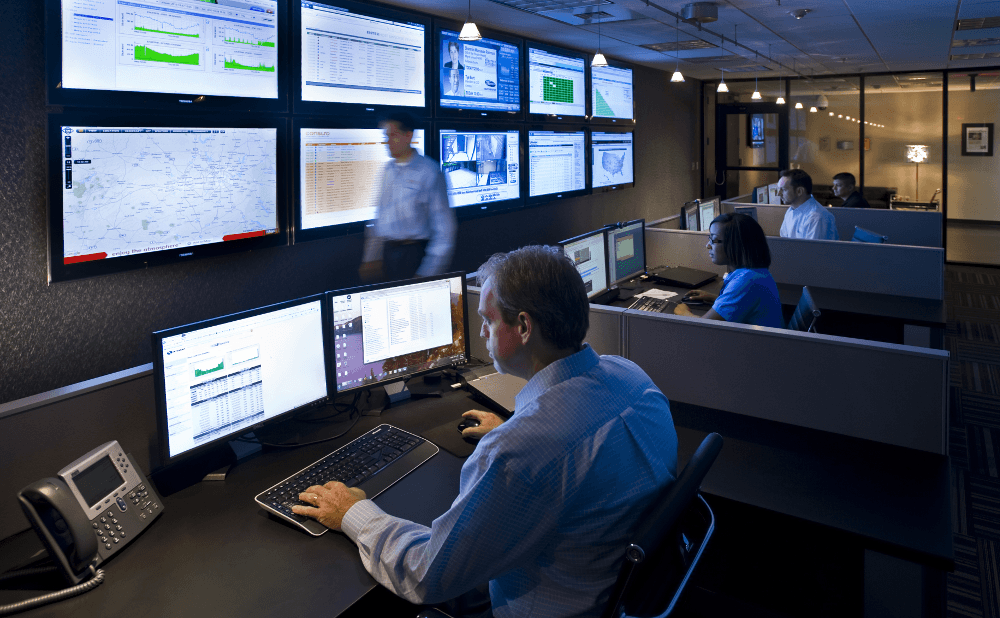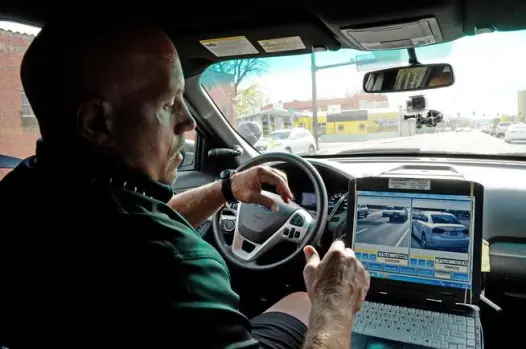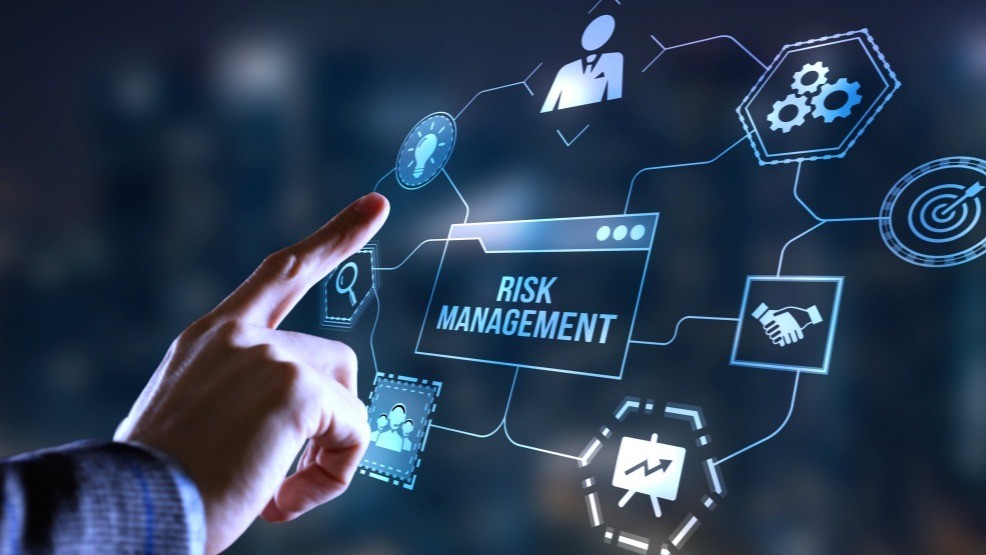Why Modern Properties Depend on a Real SOC
Your cameras record, your access control logs entries, and your alarms ping a phone—but who is stitching those signals together at 2:13 a.m.? That’s the promise of security operations center monitoring: operators who verify events in real time, correlate data across systems, and dispatch the right resource—patrol, supervisor, or law enforcement—so incidents are contained before they grow. In a world of overlapping risks (after-hours trespass, tailgating, break-ins, and social-engineering attempts), SOC monitoring converts noise into a clear, prioritized response.
At City Wide Protection Services, our SOC connects live video, analytics, alarms, and access control with mobile response and documented close-outs. The result is measurable protection: fewer false dispatches, faster on-scene arrivals, and a steady decline in repeat causes.
What “Security Operations Center Monitoring” Actually Does
Verification That Filters Noise and Speeds Truth
SOC operators don’t just pass along beeps; they verify. A motion alert, a door-prop, or a glass-break signal is matched with short camera clips, sensor history, and (when available) two-way audio. Verified events escalate instantly, while nuisances get documented and tuned out.
One Operating Picture Across Systems
Great security operations center monitoring merges feeds—video, access control, intrusion, panic, and environmental sensors—into a single console. That means operators see context: a badge denial at a dock door plus loitering near pallets becomes one priority incident, not three disconnected alerts.
Dispatch That Closes the Loop
After verification, the SOC moves from “watching” to “doing.” The nearest patrol unit gets a concise brief, site maps, and post orders. On arrival, officers stabilize the scene, coordinate with law enforcement if needed, and capture evidence—photos, timelines, and recommendations—to prevent repeats.
Smart external read: CISA’s guidance on Critical Infrastructure Security and Resilience explains how centralized monitoring and layered defenses improve readiness and response.
Where SOC Monitoring Delivers the Biggest Impact
Apartments & HOAs
Package rooms, garages, pool decks, and gates are high-activity zones. The SOC spots tailgating in real time, issues a voice-down warning (“Security speaking—you are on camera. Please leave immediately.”), and dispatches patrol when behavior persists.
Retail & Hospitality
Loitering, glass-break alerts, and back-of-house access attempts demand swift verification. SOC monitoring routes officers to the exact hotspot, reducing disruption and protecting guest experience.
Industrial & Logistics
Docks, laydown yards, and fuel points need more than recording; they need response. The SOC directs camera tours to dark corners, verifies breaches, and gets patrols moving quickly enough to matter.
Construction Sites
Open perimeters and valuable materials invite trespassers. With security operations center monitoring, alerts become immediate action, not next-day review.
Helpful internal resource: If you’re building or upgrading your camera stack, our San Diego Video Surveillance Systems guide explains analytics, placement, and live-monitoring practices that plug directly into a SOC workflow.
Inside a SOC: The Playbook That Works
Intake and Prioritization
All alerts flow into a 24/7 queue. Severity and rules (time of day, location, sensor type) determine urgency. Operators confirm whether it’s a reset, a real incident, or an equipment issue to escalate.
Human-in-the-Loop Verification
Video clips, access logs, and recent history are reviewed together. Voice-down is used for early deterrence. If behavior continues, the nearest unit is deployed.
Directed Response
Patrol receives a pinpoint location, suspect behavior notes, and any safety flags. Officers secure doors, escort trespassers off property, preserve evidence, and call law enforcement when thresholds are met.
Document, Recommend, Improve
Close-outs include photos, timestamps, and practical fixes—lighting, camera angles, signage, landscaping, or access-rule edits—so patterns don’t repeat.
SOC Features That Separate “Okay” from “Outstanding”
Video-Verified Alarms
Verification cuts false dispatches dramatically and accelerates the right response. Officers drive to a defined hotspot, not a vague building corner.
Two-Way Audio (Voice-Down)
Live audio warnings resolve many incidents in seconds. It’s polite, firm, and often enough to end a problem before a vehicle moves.
Access Control Integration
Tailgating detection, vendor verification, and temporary credentials happen in one workflow—closing the loop between cause and effect.
Heatmaps and Trend Reports
Incident heatmaps and sensor-health dashboards steer patrol routes and maintenance priorities. Over time, “problem corners” get fixed, not just watched.
Build Your SOC Program in Five Steps
Map Your Signals
Inventory cameras, alarms, access points, and hours of greatest exposure. Identify blind spots, especially in garages, docks, and under-lit approaches.
Normalize Locations and Priorities
Make sure “North Garage P2 East” means the same thing in video, access control, and alarm systems. Give each alert type a clear priority and an action.
Author Clear Run-Books
Define who gets called, when patrol rolls, and when law enforcement is engaged. Keep it simple and auditable: one matrix for all sites, with local notes as addenda.
Train and Table-Top
Operators and officers rehearse common scenarios—trespass, door props, after-hours vendor access—to turn policy into muscle memory.
Measure What Matters
Track alert-to-verify time, verify-to-dispatch time, on-scene arrival, false-alert reduction, and repeat-cause fixes closed (lighting, signage, camera angles). If it isn’t measured, it won’t improve.
Frequently Asked Questions
Do I need new hardware to start?
Not necessarily. Most programs begin by integrating existing cameras, panels, and access control; then we add analytics or speakers where they make a difference.
How does SOC monitoring work with police?
The SOC verifies events, stabilizes with patrol, and coordinates clean handoffs to law enforcement when thresholds or statutes require—improving outcomes and documentation.
Can you support multi-site portfolios?
Yes. A single run-book and standardized reporting keep coverage consistent, whether you manage HOAs, retail centers, logistics yards, or a mix.
Why City Wide Protection Services
- Integrated Layers, One Partner — We fuse live video monitoring, access control, alarm verification, and mobile response into a single, accountable program.
- Proven Scale & Speed — 350+ properties protected, 65,000+ responses since 2016, and 30+ verifiable life-saving interventions since 2020.
- Transparent Reporting — Time-stamped incident packages, photo evidence, and monthly KPI reviews you can share with owners, boards, and insurers.
- Community-First Professionalism — Courteous engagement and de-escalation at the core, so safety and resident/tenant experience rise together.
Put a Real SOC Behind Your Property—Day and Night
If you’re tired of being woken by alarms you can’t verify—or reviewing footage after the fact—step up to security operations center monitoring that sees, verifies, and acts in one motion.
Call us: 888-205-4242
Email: [email protected]
We’ll map your systems, write your run-book, and launch a SOC program that turns alerts into outcomes.







